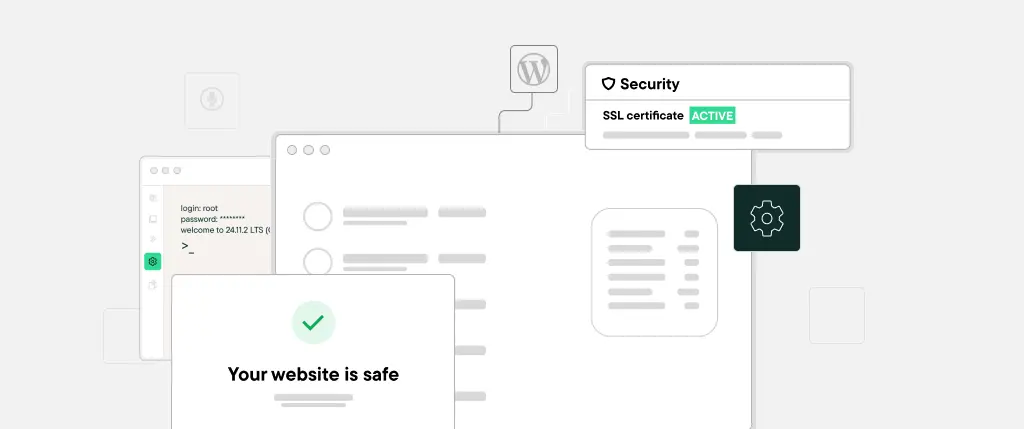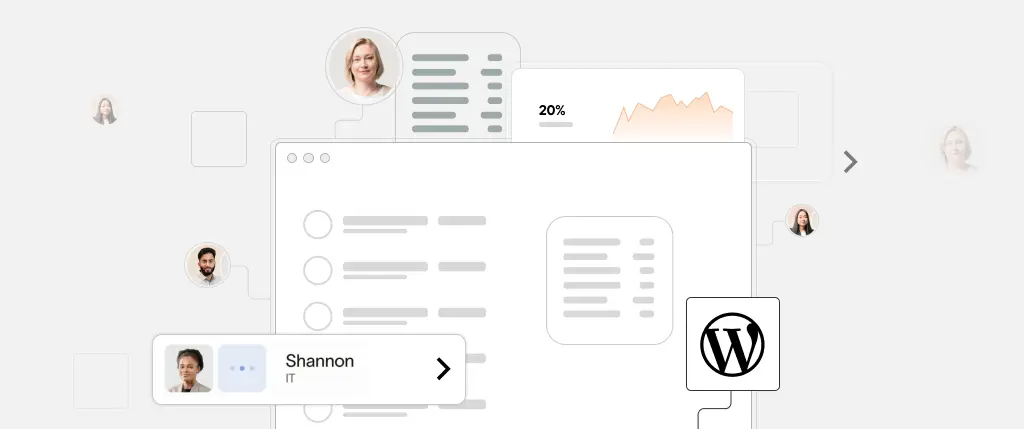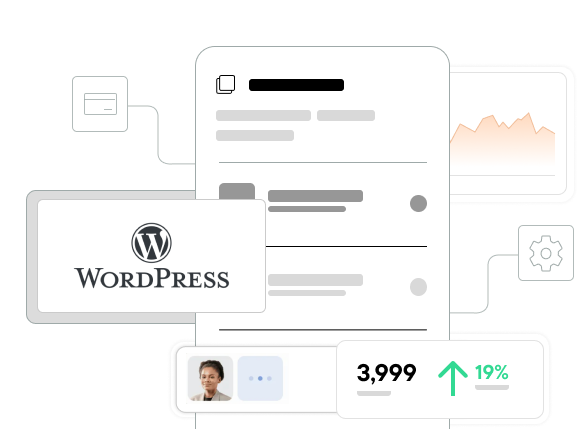Your WordPress site doesn’t operate in a vacuum. Whether you want to notify Slack after a new order, send leads from a form to your CRM, or trigger an email sequence when a user signs up—webhooks are the engine behind these real-time connections.
In this guide, you’ll learn how to use webhooks in WordPress to both send and receive data, enabling seamless integrations with external services. Whether you’re a developer building custom APIs or a site owner looking to automate processes, this guide has you covered.
What Are Webhooks?
Webhooks vs APIs: What’s the Difference?
A webhook is a way for one application to automatically send data to another when a specific event happens.
Unlike an API, which requires you to “pull” data with a request, a webhook “pushes” the data immediately after something changes.
🔄 Example: A user submits a form → a webhook sends that data instantly to Google Sheets or Mailchimp.
Why Use Webhooks in WordPress?
Webhooks allow your WordPress site to communicate instantly with third-party services. Here are common use cases:
- 🛒 WooCommerce Orders → Forward to your shipping or ERP system
- ✉️ Form Submissions → Send leads to Google Sheets, CRMs, or Slack
- 👤 New User Signups → Trigger welcome emails or enroll users in courses
- 🔌 Zapier/Make Integrations → Automate tasks across hundreds of apps
No more waiting on cron jobs or manual exports—webhooks let your site talk to the world in real time.
How to Use Webhooks in WordPress
There are two key ways to work with webhooks in WordPress:
1. Receiving Webhooks in WordPress (Acting as a Webhook Endpoint)
You can turn your WordPress site into a webhook listener by creating a custom REST API endpoint.
add_action('rest_api_init', function () {
register_rest_route('myplugin/v1', '/webhook/', [
'methods' => 'POST',
'callback' => 'handle_incoming_webhook',
'permission_callback' => '__return_true',
]);
});
function handle_incoming_webhook($request) {
$data = $request->get_json_params();
file_put_contents(__DIR__ . '/webhook-log.txt', json_encode($data) . PHP_EOL, FILE_APPEND);
return new WP_REST_Response(['status' => 'received'], 200);
}2. Sending Webhooks from WordPress (Pushing Data to Another Service)
To send data to another app after a WordPress event (like user registration), use wp_remote_post().
add_action('user_register', 'send_webhook_on_user_signup');
function send_webhook_on_user_signup($user_id) {
$user = get_userdata($user_id);
$payload = [
'username' => $user->user_login,
'email' => $user->user_email,
'registered_at' => current_time('mysql'),
];
wp_remote_post('https://example.com/webhook-endpoint', [
'headers' => ['Content-Type' => 'application/json'],
'body' => wp_json_encode($payload),
]);
}Best Practices for Webhooks in WordPress
✅ Authenticate Incoming Webhooks
Always verify that incoming webhook requests are legitimate. Use a shared secret or token in the headers:
$headers = $request->get_headers();
if ($headers['x-api-key'][0] !== 'your-secret-token') {
return new WP_REST_Response(['error' => 'Unauthorized'], 403);
}✅ Log Every Webhook
Logging is essential for debugging and monitoring:
file_put_contents(__DIR__ . '/webhook-log.txt', json_encode($payload) . PHP_EOL, FILE_APPEND);✅ Use Plugins When Possible
Not a developer? No problem. There are plugins that handle webhooks for you:
- WP Webhooks
- Uncanny Automator
- FluentCRM
- Zapier for WordPress
These tools let you connect WordPress to services like Slack, Google Sheets, Mailchimp, and more—without writing code.
Real-World Use Cases
| Event | Action | Tool Suggestion |
|---|---|---|
| Form submission | Send data to Google Sheets or CRM | WP Webhooks, Contact Form 7 |
| New user registration | Trigger welcome email sequence | Webhook → Email Platform |
| WooCommerce order created | Sync with fulfillment or inventory system | Custom REST + wp_remote_post |
| Product updated | Inform external platform or sync data | REST API + webhook sender |
How Sitebox Enhances Webhook Workflows
If you’re building a WordPress site that relies on real-time integrations, Sitebox offers a performance-focused infrastructure for webhook-heavy environments.
- ⚡ Fast Execution – Low-latency PHP runtimes for lightning-fast webhook responses
- 🔐 Secure Endpoints – HTTPS, IP whitelisting, and firewall protection by default
- 🛠️ Built-In Logs – Monitor incoming/outgoing webhooks directly from the dashboard
- 🚀 Git-Based Deployment – Easily deploy webhook logic with version control
- 🌐 API-First Ready – Perfect for headless WordPress and external app integrations
👉 Explore how Sitebox supports real-time WordPress development
Conclusion
Webhooks in WordPress open the door to smarter, automated, and connected digital experiences. Whether you’re pushing WooCommerce orders to an ERP or syncing leads from a form, webhooks help your site become more powerful and efficient.
Key Takeaways
- Webhooks send or receive data instantly based on events
- WordPress can both listen for and send webhooks
- Use custom REST endpoints or plugins depending on your skill level
- Always authenticate and log for security and visibility
- Hosting matters—choose infrastructure built for modern integrations




